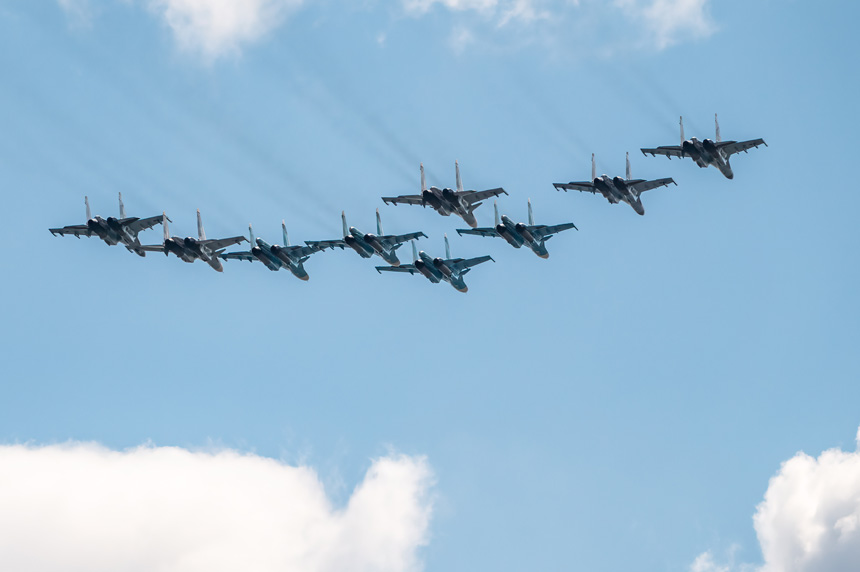Stay up to date with the latest OSINT news from around the world
This week in open-source intelligence (OSINT) news, Russia and China conducted joint patrols, in which Russian aircraft landed in China’s airfields. National security experts are raising concerns over China’s online activities to protect their dominance of the battery supply chain. The U.S.-China Economic and Security Commission’s report highlights the need for enhanced open-source collection and sharing of Chinese government documents.
Lastly human rights organizations and the European Union are leveraging OSINTto document and prosecute alleged war crimes in Ukraine.
This is the OSINT news of the week:
Disinformation and the lithium supply
China’s monopoly on the lithium battery market has created a supply-demand gap in their favor. While the U.S. seeks to create a domestic supply, it is years, if not a decade or more, away from being able to achieve self-reliance. Some new domestic battery industries have even become the target of disinformation campaigns on social media designed to halt or slow progress on development in the U.S. market.
Legitimate environmental concerns, especially given their proximity to Native American reservations, could become fodder for disinformation campaigns. American companies. This type of disinformation-based economic coercion has been seen before, but could become an increasingly utilized strategy as China targets the U.S. battery supply chain.
“The intelligence community could also take this moment as an opportunity to educate government policymakers, U.S. allies, and the public about the extent of Chinese interference in mineral mining and processing.”
— Fabian Villalobos, RAND Corporation
Russia and China’s joint patrols
Over the Sea of Japan and the East China Sea, long-range bombers from Russia and China were seen conducting joint patrols. Even more notable, Russian aircraft landed at a Chinese air base, a new development among the allied nations. Chinese aircraft has also visited Russian airfields.
New joint RU/CN aerial patrol over Sea of Japan and East China Sea. Tu-95MS, H-6K, 8 hours, supported by Su-35S and Su-30SM. Foreign fighter jets also appeared.https://t.co/0yS3F1BEQD pic.twitter.com/xjfVcQgTqv
— Dmitry Stefanovich (@KomissarWhipla) November 30, 2022
OSINT researchers on Twitter shared videos of the Russian bombers over China. The Russian Tu-95s had not previously visited the country. The aircraft is one of Russia’s nuclear-capable long-range bombers. While neither entered foreign airspace, they did fly into South Korea’s Air Defense Identification Zone.
The joint military action is the latest in a list of cooperative maneuvers, including the People’s Liberation Army’s (PLA) participation in the ZAPAD 2021 drills. The continued cooperation is a particularly foreboding sign for the U.S. as the war in Ukraine continues and U.S.-China tensions rise.
“While the Russian Ministry of Defense was at pains to point out that the latest air exercise was “not directed against third countries,” the political relevance of such close military cooperation has not been entirely lost.”
— Thomas Newdick, The Drive
Tracking alleged war crimes
Where OSINT meets human rights: organizations are collecting open-source information to investigate potential Russian war crimes. One such European human rights organization, the 5AM Coalition (named for the timestamp of the Russian invasion), is gathering evidence for cases of attacks on civilians by Russian forces. Despite collecting evidence of as many as 48,290 atrocities, the road to prosecution is a long and challenging one.
The attacks the group is investigating includes the shelling of citizens in line for a bakery in which 14 people were killed. As part of their investigation, the group used commercial satellite imagery, eyewitness accounts and online documents to identify the brigade responsible. Previously international courts did not accept open-source evidence in cases, but the European Union has since amended its rules to allow for OSINT to be used in the prosecution of war crimes.
“Open-source research pioneer Elliot Higgins, the founder of investigative group Bellingcat, says the Ukraine crisis has raised the profile of open-source research.”
— Nimura Kazuho and Hizume Kaori, NHK World-Japan
The U.S.-China Economic and Security Review Annual Report recommends OSINT investment
The U.S.-China Economic and Security Review Commission has released its 2022 Annual Report to Congress. The report, compiled utilizing open-source information, includes analysis of Chinese trade practices, its energy plans, vulnerabilities in the U.S. supply chain, cyber warfare and foreign affairs, including China-Taiwan tensions. The Commission also made recommendations to Congress, including establishing an open source FFRDC to translate and share PRC documents.
China’s concentration of critical supply chains continues to raise security concerns for the U.S., including regarding rare earth elements mentioned above. Moreover, the Chinese government is actively shoring up their own vulnerabilities in regards to the supply chain and any reliance on U.S. imports. The commission calls for new strategies in reaction to China’s trade practices and responding to U.S. vulnerabilities.
The Commission specifically recommends congress fund a Research and Development Center for the collection of open-source information from the People’s Republic of China.
“The Commission recommends:
— U.S.-China Economic and Security Review Commission
1. Congress pass legislation creating a new Federally Funded Research and Development Center (FFRDC) (to replace the Open-Source Center closed in 2015) that will translate and maintain a publicly available collection of important open source material from the People’s Republic of China (PRC) and other countries of strategic interest. This legislation should require existing FFRDCs to provide to this new entity a copy of all open source Chinese-language materials collected or used in any government-sponsored analytical or related projects on an ongoing basis.”
Every other week, we collect OSINT news from around the world. We continue to keep a close watch on Russia's war in Ukraine, especially on Twitter. We’re also gathering information on cyberthreats, federal intelligence strategies and much more. Find us on Twitter and share the OSINT news you’re keeping up with.
To keep up to date on the latest OSINT and cyber security news, subscribe to our bi-weekly OSINT News Roundup.
Tags OSINT news

